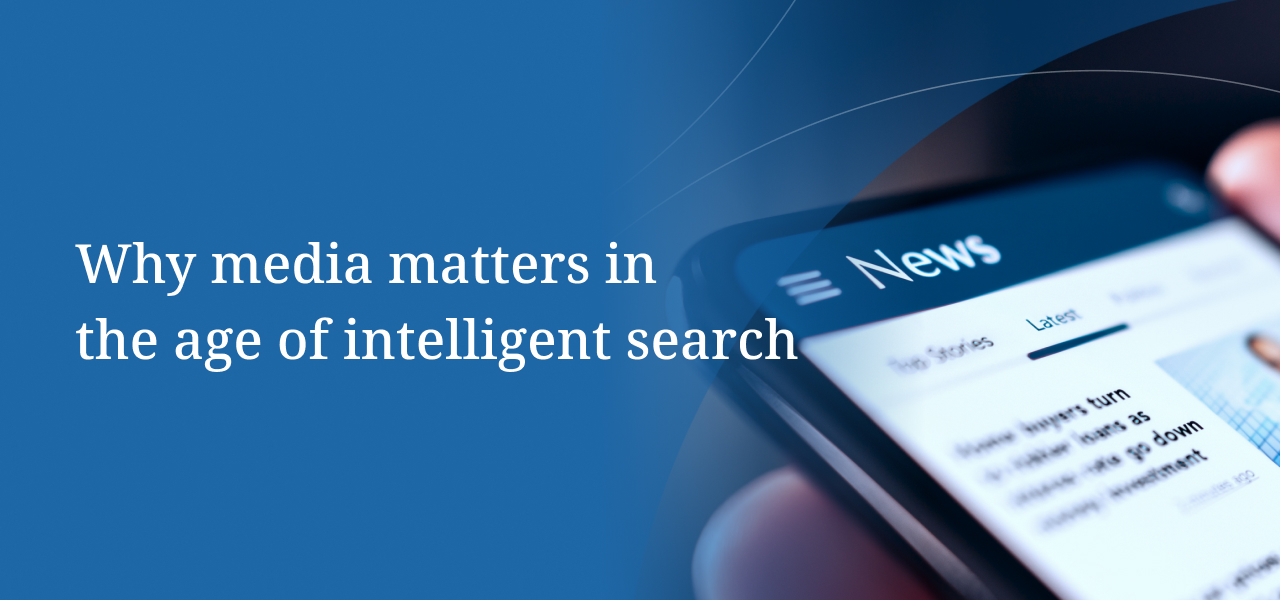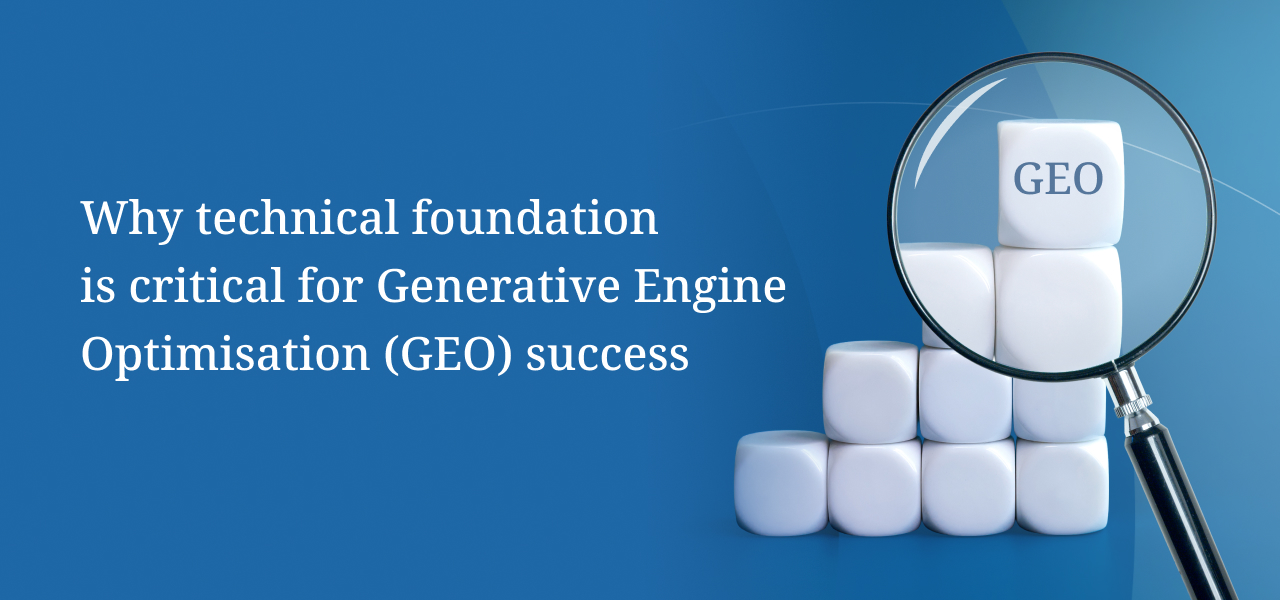Marketing is undergoing unprecedented levels of disruption and change not witnessed since the emergence of Google in the 2000s. With the undeniable influence of artificial intelligence on traditional search in 2025, standard metrics like organic traffic and click-through rates have become less relevant.
Now is not the time to bury your head in the sand. Marketers need to open their eyes and accept that the landscape has changed forever. You need to adapt your marketing strategies and understand the relevant metrics in today’s modern AI world.
The shift from clicks to conversations
As a marketing consultancy, we are all too aware of the importance of metrics. In the past, clients were obsessed (and rightly so) with Google traffic to their website and subsequent clicks. However, search has changed forever. In 2024, 78% of organisations reported using AI tools, up from 55% the previous year. Product recommendations via generative AI tools are now used by 58% of consumers, compared to 25% in 2023, a 132% increase. It is not a gradual change; it is dramatic and totally redefines the customer experience.
Consider this scenario: A potential client searches for “best CRM for growing B2B companies”. Instead of clicking through multiple websites, they receive a comprehensive AI-generated response that compares solutions, highlights key features, and even provides implementation recommendations. If your brand isn’t part of that conversation, you’ve lost the opportunity before the prospect even knows you exist.
The data reinforces this reality. AI Overviews in search engines reduce website click-throughs by up to 50%. Nevertheless, the brands that are incorporated in these AI response record traffic growth by 1.5x in informational queries and 3.2x in transactional queries. The message is clear: the visibility of AI responses is not only helpful, but it also becomes a significant entry point for acquiring customers.
Understanding the new metrics that matter
The ‘old SEO approach’ concentrated on rankings and traffic. However, AI brand visibility should be measured in a more advanced way. The most significant indicators of the AI era to note are:
Share of AI conversation (SOM)
This measures how often and how prominently your brand appears in AI responses compared to competitors. Think of it as the AI equivalent of share of voice. Research shows that brand visibility can vary dramatically across different AI platforms. One study found a brand’s share ranging from 24% on one platform to less than 1% on another.
Citation authority
How consistently is your brand cited as a primary source in AI responses? This metric directly correlates with trust and credibility in the AI ecosystem.
AI presence rate
The share of your brand that will be found in AI responses to queries related to your brand. This metric is your base metric of visibility.
Sentiment and framing
Perhaps most critically, how your brand is positioned and described in AI responses. Research reveals that only 31% of AI-generated brand mentions are positive, and of those, just 20% include direct recommendations. This means only about 6% of all AI brand mentions result in actual recommendations.
The authority challenge: why being mentioned isn’t enough
One of the most striking findings from recent research is the gap between brand mentions and brand authority. Fewer than 1 in 5 brands manage to be both frequently mentioned and consistently cited as authoritative sources.
This creates two distinct battlegrounds for marketers. The first is the “sentiment battle”, ensuring your brand is part of the conversation when AI models scan reviews, forums, and social discussions. The second is the “authority game” being recognised as a credible source when AI seeks to validate information.
This dual challenge explains why traditional content marketing alone isn’t sufficient. AI systems increasingly rely on third-party validation, community discussions, and user-generated content to form opinions about brands. Reddit, for instance, has become the number one source for ChatGPT across several sectors, with citations increasing by 450% in just three months.
Strategic approaches to AI visibility
Successfully navigating the AI landscape requires a layered approach that builds from technical foundations to strategic authority building.
Foundation layer: technical optimisation
Start with structured data implementation. Schema markup for your organisation, products, services, and FAQs provides AI systems with clear, machine-readable information about your brand. This is the most direct way to communicate with AI search engines.
Content structure matters equally. AI systems favour content written in “BLUF” (Bottom Line Up Front) format, answering first and providing details second. Use clear headings, lists, and tables to make your content easily digestible. Ensure your robots.txt file allows AI crawlers, such as ChatGPT-User and PerplexityBot, to access your site.
Strategic layer: content and context
Develop comprehensive content that addresses entire topic clusters rather than individual keywords. If competitors are being cited for “project management for small teams,” “startup project management,” and “affordable PM tools,” create a single authoritative piece that covers all these related intents.
Regular content updates are crucial. AI platforms heavily favour recent content, with material from the past 2-3 months dominating citations. Implement a systematic refresh schedule for your top-performing content, adding new statistics, case studies, and examples on a monthly basis.
Authority layer: trust building
That is where most brands fail. To establish the AI power, you need to take the initiative and work outside your channels. Find high-quality sources that refer to competitors, but not you; these are so-called citation gaps, and they are direct opportunities.
Engage authentically in community discussions on platforms like Reddit, industry forums, and LinkedIn. The AI LLMs are becoming increasingly convincing in authentic user dialogues, rather than in branded content. Be part of the discussions that are relevant to you on a weekly basis, and present real insights instead of promotional posts.
Optimise your presence on review platforms like G2, Capterra, and Trustpilot. Respond to reviews within 48 hours and maintain updated profiles with current product information and testimonials.
Industry-specific considerations
The strategies of AI visibility should consider industry dynamics. The nature of finance is very concentrated, with the most popular brands occupying a substantial portion of AI discussions. Fashion, in turn, is more disjointed, with sustainability stories becoming the sources of visibility behind brands such as Patagonia.
B2B services face unique challenges, as 89% of B2B buyers now use AI platforms for research. The stakes are particularly high because AI often makes initial vendor shortlists before prospects ever visit company websites.
Measuring success in the AI era
Monthly reporting is becoming a thing of the past. The results produced by AI can change rapidly, requiring real-time monitoring. Enforce a system to monitor your brand across various AI platforms, sentiment variations, and new opportunities to be identified.
Focus on leading indicators, such as citation frequency and context quality, rather than lagging metrics, like traffic. The goal isn’t just to appear in AI responses, it’s to be positioned favourably when prospects are making decisions.
Your future starts now
The change to AI-based search is not in the future; it is present. SEMrush estimates that AI search traffic will surpass traditional search engines by 2028, yet some of its first adopters are already reaping the benefits. Firms that adopt holistic AI visibility models state that brand awareness has increased by 35% in 60-90 days.
Brands that succeed in this new world will be the ones that view AI visibility not only as a strategic necessity but as a tactical complement. They are investing in structured content, establishing genuine authority, and determining success by AI-specific metrics. We are already doing this for several of our clients, and we have now launched a more formalised GEO offering that combines our services needed for brand visibility in today’s AI world – content, evolved SEO, and GEO traction, as well as PR – a powerful combination.
For marketing leaders, the question isn’t whether to adapt to AI search; it’s how quickly you can build the capabilities to compete effectively. The brands that master AI visibility today will own the conversations that drive tomorrow’s business growth.
The AI era demands a new playbook. The time to start writing yours is now.




